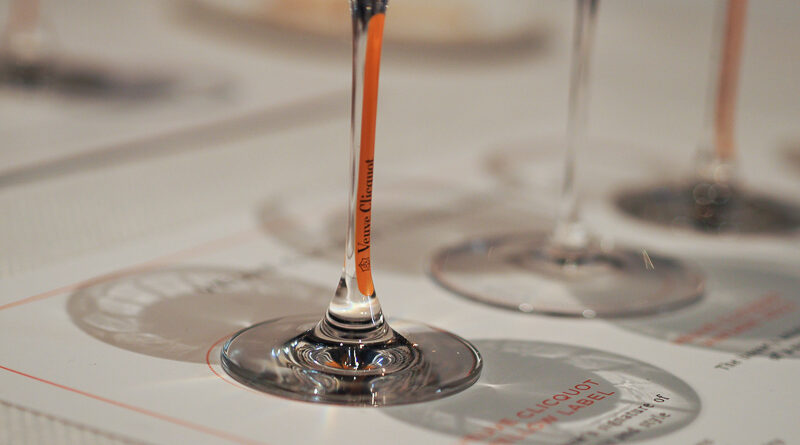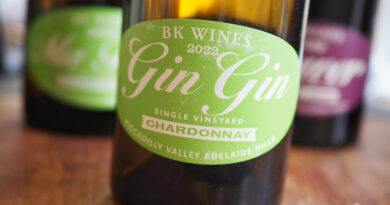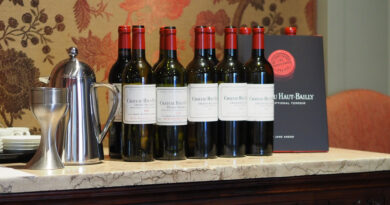Champagne Veuve Cliquot reserve wine tasting: getting geeky about fizz
This was an interesting tasting of reserve wines from Veuve Clicquot.
La Grand Dame Vintage 2012 label was designed by Yayoi Kusama, and so the tasting was held at the Tate Modern, which is hosting an exhibition of two of the mirror rooms of this influential Japanese artist, which were donated to the Tate by Victoria Miro. A couple of images of these remarkable works are shown below.
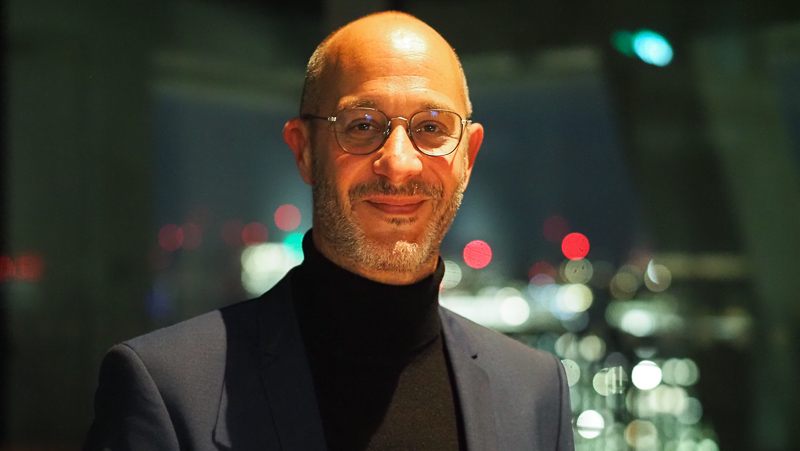
‘For me it is interesting to tell you what reserve wines can bring to a blend,’ says chef de caves, Didier Mariotti. ‘At Veuve Cliquot we have one of the best collections of reserve wines. They are kept by village and vintage.’ Veuve is a large house (Didier is not allowed to talk numbers, of course), and because 45-50% of the blend of their yellow label NV is made from reserve wines, they have an enormous stock. Just keeping track of these wines is a major job. ‘We do a lot of tasting!’ says Didier. Every Champagne house has to keep 80% of one harvest in the winery as an insurance. They keep much more.


The team at Veuve Clicquot taste reserve wines every six months to check on the ageing. They ask: can we keep this another year? They want to avoid oxidation, and so they try to anticipate the ageing potential of each year. ‘For me there is only one rule: to taste, taste and understand.’ If a reserve wine is beginning to look a little tired, heading towards oxidation, then they have two or three years in which to use it in the blend. The oldest of their wine is currently a 1988 Chardonnay.
The Veuve Clicqout reserve wines are all aged in stainless steel. There are no barrels of foudres in the cellar. They work with fine lees to help keep them fresh.
They classify the reserve wines into three families:
Young: 1-2 years old
Mature: 4-10 years old
Then the ‘spices’, older than 10. ‘You don’t need a lot of these,’ says Didier.
Yellow label has 45-50% of reserve wines in the blend. Of this, 60% is young, 35% is mature and 5% is spicy. Each vintage they will taste 1000 or so wines, of which 600-700 are wines that will form the basis of this year’s wines, and then the others which will go into the reserve program.
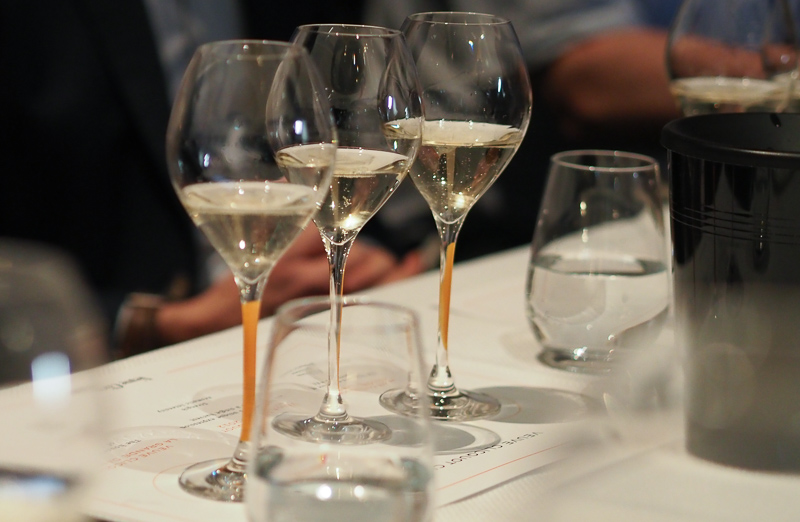
We tasted six Pinot Noir reserve wines blind:
Reserve 1 – bright, focused and fruity with some cherry and green apple notes. Very juicy but with some nice concentration. Crisp and primary with good acidity. Has yellow and white fruits. 2019 Pinot Noir from Ambonnay.
Reserve 2 – powerful, structured and intense with some apple and pear. Juicy and intense with a bit of grip, and notes of cherry and even some mint. Notes of tangerine and redcurrant on the finish. Has keen acidity. Lots of presence here. 2014 from the Aube. [The only one where they don’t keep the villages separate is the Aube]
Reserve 3 – lovely detail here: mandarin and herbs with nice lemons, and a bit of creaminess. Lovely lemon and cherry fruit, some plum, showing great precision and fine, tapering acidity. So pretty and expressive, with a spicy flourish on the finish. 2010 Bouzy
Reserve 4 – this has some development, but also some freshness, with toast, nuts and dried citrus fruits. Good acidity and focus with some pithiness and a touch of bitterness on the finish. Lively with good precision, and some smoky reduction. It’s spicy, but it tastes more mature. 2008, with 10 g/l acidity. Verzenay.
Reserve 5 – 2006 from Verzy – some toasty notes with good acidity sitting under the lemon and cherry fruit. Fine, fresh and detailed with some fine spiciness and lovely tapering acidity. Some fine bitter notes on the finish. Still very pure and youthful. Has a nice spicy finish.
‘People are afraid of bitterness,’ says Didier. ‘But it is helpful to maintain a very long finish. I love bitterness. But it is difficult to manage in a wine so we have to be very careful.’
Reserve 6 – ‘the king of the spices, but I think it will be its last year,’ says Didier. Some cabbage and apple notes, as well as a touch of creaminess. Rich and complex with some oxidative hints, showing pickled vegetables and fine herbs. Good acidity. 1996 from the Aube.
We then tasted three finished wines.
Champagne Veuve Clicquot Yellow Label NV
2017 base, 50% Pinot Noir, 35% Chardonnay, 15% Pinot Meunier, 10 g/l rs. This is bright and toasty with nice crystalline citrus fruit, and a touch of sweetness. Lovely precision and intensity here with nice purity to the fruit. Hints of peach and aniseed, too. 90/100
Champagne Veuve Clicquot Vintage 2012
Very fresh, pure and linear with taut cherry and lemon fruit. Subtle toastiness here, with high acidity. Pristine and bright with a compact, taut personality. Then there are some vanilla and pastry notes, too. Fruity and expressive. 93/100
Champagne Veuve Clicquot La Grande Dame 2012
90% Pinot Noir. Fine, bright and expressive with taut lemon, pear and cherry fruit, with an emphasis on citrus. Very fine and delicate, but showing some power and structure. Has a thrilling spicy citrus character with a touch of aniseed and a long, tapered, expanding finish. Taut and salty on the finish. 95/100

